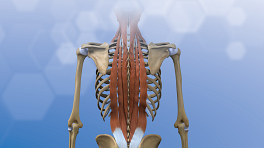Understanding how pain is defined can be helpful in learning how to control it better. For the purposes of research and medical practice, pain is typically divided into three categories:
In This Article:
- Chronic Pain As a Disease: Why Does It Still Hurt?
- Types of Back Pain: Acute Pain, Chronic Pain, and Neuropathic Pain
- When Acute Pain Becomes Chronic Pain
- Understanding Chronic Pain
Acute Pain Usually Lasts a Short Time
Pain that lasts less than 3 to 6 months, or pain directly related to tissue damage, is called acute pain. This is the type of pain caused by a paper cut or needle prick. Other examples of acute pain include:
- Touching a hot stove or iron. This pain will cause a fast, immediate, intense pain with an almost simultaneous withdrawal of the body part being burned. A few seconds after the initial pain and withdrawal, another type of pain, more of an ache, is likely to be experienced.
- Smashing one's finger with a hammer. This pain is similar to that of touching a hot stove in that there is immediate pain, withdrawal, and then a “slower” aching pain.
- Labor pains. The pain during childbirth is acute and the cause is certainly identifiable.
When pain persists, it becomes more affected by other influences, which can increase the individual's risk of developing chronic pain. These influences include such things as the pain signal continuing to reach the central nervous system after the tissue has healed, lack of exercise (physical deconditioning), a person’s thoughts about the pain, as well as emotional states such as depression and anxiety.
Chronic Pain Continues After Tissue Heals
Fibromyalgia is an example of chronic, debilitating trigger point pain.
The term “chronic pain” is generally used to describe pain that lasts more than three to six months, or beyond the point of tissue healing. This type of pain might also be termed “chronic benign pain” or “chronic non-cancer pain,” depending upon the situation. (Chronic pain due to cancer is more of an acute or acute-recurrent type of pain since there is ongoing and identifiable tissue damage. There is also chronic pain due to an identifiable cause, which will be discussed subsequently). For the purposes of this discussion, the term “chronic pain” will be used.
Chronic pain is usually less directly related to identifiable tissue damage and structural problems. Chronic back pain without a clearly determined cause, failed back surgery syndrome (continued pain after the surgery has completely healed), and fibromyalgia are all examples of chronic pain. Chronic pain is much less well understood than acute pain.
Chronic pain can take many forms, but is often placed in one of these two major categories of its own:
- Pain with an identifiable cause, such as an injury. Certain structural spine conditions, including degenerative disc disease, spinal stenosis, and spondylolisthesis, can cause ongoing pain until they are successfully treated. These conditions are due to a diagnosable anatomical problem. If the pain caused by these types of conditions has not subsided after a few weeks or months of nonsurgical treatments, spine surgery may usually be considered as a treatment option. In reality, this type of chronic pain might be conceptualized as a long term acute pain even though the term chronic pain is used.
- Chronic pain with no identifiable cause. When pain persists after the tissue has healed and there is no clear reason for the pain that can be identified, it is often termed “chronic benign pain.”
See Understanding Different Types of Back Pain
It appears that pain can establish a pathway in the nervous system in some cases, becoming the problem in and of itself. In other words, the nervous system may be sending a pain signal even though there is no ongoing tissue damage. The nervous system misfires and creates the pain. In such cases, the pain is the disease rather than a symptom of an injury.
Neuropathic Pain Has Distinct Symptoms
Nerve pain, such as sciatica, is known for its severe, sharp, and searing sensation.
In a third type of chronic pain, neuropathic pain, no signs of the original injury remain and the pain is unrelated to an observable injury or condition. Certain nerves continue to send pain messages to the brain even though there is no ongoing tissue damage.
See All About Neuropathy And Chronic Back Pain
Neuropathic pain could be placed in the chronic pain category, but it has a different feel than chronic musculoskeletal pain. The pain is often described as severe, sharp, lightning-like, stabbing, burning, or cold. The individual may also experience ongoing numbness, tingling, or weakness. Pain may be felt along the nerve path from the spine down to the arms/hands or legs/feet.
It is thought that injury to the sensory or motor nerves in the peripheral nervous system can potentially cause neuropathy. If the cause can be found and reversed, treatment may allow the nerves to heal gradually, easing the pain. If medical care for the pain is delayed, however, the pain can be harder to manage, and require more aggressive treatment.
See Understanding Neuropathy Symptoms
Treatment options for neuropathic pain differ significantly from the approaches used for other types of back pain. Opioids (such as morphine) and NSAIDs (such as ibuprofen or COX-2 inhibitors) are usually not effective in relieving neuropathic pain.
Medications designed for epilepsy or depression (anticonvulsants or antidepressants) often reduce the symptoms, and topical medications are sometimes helpful. If medications and other approaches do not offer sufficient relief, nerve block injections, spinal cord stimulation, and pain pumps may be considered for neuropathic pain.











